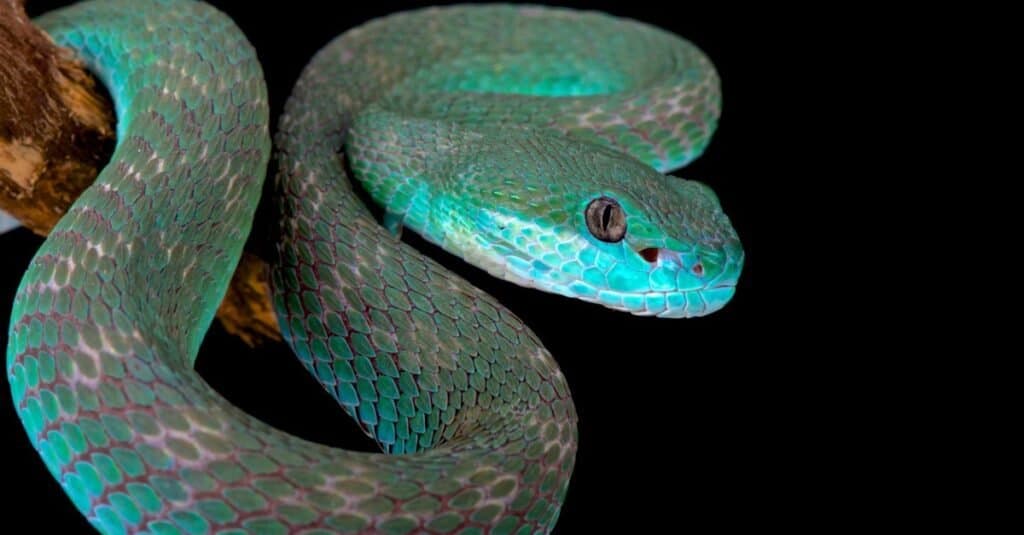Introduction
website
When it involves the remarkable globe of snakes, couple of species catch the creativity fairly like the baby tiger snake. Known for their unique coloration and powerful venom, these serpents are an important part of Australia's one-of-a-kind environment. In this comprehensive article, we will look into different aspects of child tiger serpents, including their habits, habitat, and just how to securely interact with them. Whether you're a wild animals fanatic or merely interested concerning these creatures, understanding infant tiger snakes can aid cultivate a deeper appreciation for nature.

Baby Tiger Snakes: What You Required to Know About Their Behavior and Habitat
What Are Child Tiger Snakes?
Baby tiger serpents are adolescent kinds of the very venomous varieties known clinically as Notechis scutatus These serpents are largely found in seaside regions of Australia, especially in Tasmania and southern Victoria. As they grow, their pigmentation modifications from a much more muted palette to the characteristic yellow and black bands that provide their name.
One remarkable facet of child tiger snakes is their dimension; hatchlings normally gauge around 25-30 cm in size. In spite of their little stature, they have an unexpected quantity of poison that can be damaging to humans if bitten.

Physical Characteristics
Tiger serpents possess numerous crucial physical qualities:
- Coloration: The distinctive banding pattern often becomes much more noticable as they mature. Size: Grownups can get to lengths of approximately 2 meters. Body Shape: They have a durable body that helps in swimming and terrestrial movement.
Where Do Infant Tiger Snakes Live? Understanding Their Habitat
Understanding the habitat preferences of child tiger snakes is necessary for both conservation efforts and public safety. These snakes flourish in numerous environments:

- Wetlands: Marshes and swamps supply sufficient searching grounds. Coastal Regions: Often discovered near beaches where they can quest for prey. Woodlands: Thick vegetation offers cover from predators.
Geographical Distribution
Tiger snakes are predominantly found along Australia's southern coastline, consisting of:
- Tasmania: Home to among the most infamous populations. Victoria: Specifically in areas near water bodies.
Are Tiger Snakes Venomous? A Deep Dive into Their Venom
One typical concern emerges when discussing infant tiger serpents: "Are tiger snakes poisonous?" The answer is a resounding yes!
Venom Composition
The venom of tiger snakes has neurotoxins that can create paralysis, coagulopathy (blood top 10 most venomous snakes in australia clotting issues), and potentially fatality if neglected. Right here's what you need to know:
- Effects on Humans: An attack from a tiger snake can result in signs like swelling, discomfort at the bite website, nausea or vomiting, and also respiratory system failure.
Comparison with Various other Venomous Snakes
In contrast to various other Australian snakes such as the eastern brownish snake or king brownish serpent, tiger snake poison is thought about among the most potent. Nevertheless, fatalities are uncommon because of improved medical therapies and accessibility to antivenom.
Behavioral Patterns of Child Tiger Snakes
Understanding just how child tiger serpents act is important for those that stay in or check out locations where these reptiles are prevalent.
Nocturnal Habits
Most baby tiger snakes exhibit nocturnal behavior. They have a tendency to forage for food throughout cooler evening temperature levels. This flexibility helps them stay clear of predators while boosting their hunting efficiency.
Hunting Techniques
Their searching techniques include:
- Ambush Predation: Waiting inactive till target comes close. Active Foraging: Proactively moving with greenery or along rivers trying to find food.
First Aid for Serpent Bites: What You Need to Know
Despite being remarkable animals, encounters with child tiger snakes can lead to unsafe scenarios if bites take place. Recognizing first aid procedures can save lives.
Immediate Steps After a Bite
Remain calmness; panic raises heart rate. Immobilize the influenced limb utilizing a splint or bandage. Seek prompt clinical attention-- antivenom might be necessary.Creating a Snake Bite Emergency Treatment Kit
A well-prepared first aid set ought to consist of:
|Item|Function|| ------------------------------|--------------------------------------|| Compression plaster|To paralyze the arm or leg|| Splint|Supports busted bones or joints|| Antihistamines|Eases allergic reactions|| Emergency get in touch with numbers|Quick accessibility throughout emergency situations|
Common Misconceptions Regarding Tiger Snakes Debunked
Many misconceptions border these fascinating reptiles; let's clarify some misconceptions typically held by people.
Myth # 1: All Tiger Snakes Are Aggressive
While some people may show protective behaviors when intimidated, not all tiger snakes screen aggressiveness towards human beings unless provoked.
Myth # 2: Infant Tiger Snakes Are Less Unsafe Than Adults
This myth can not be additionally from the reality! Baby tiger snakes contain almost as much venom as adults about their size; thus they posture considerable dangers if bitten.
FAQs About Baby Tiger Snakes
What do baby tiger snakes eat?- They mainly eat tiny animals, birds, frogs, and fish.
- Look for slender bodies with pale banding patterns that become a lot more obvious as they mature.
- Yes! Birds of victim and larger reptiles may target them.
- Typically every few weeks as they proliferate throughout their early life stages.
- While some individuals do maintain them unlawfully without permits as a result of their harmful nature; it's normally not recommended given their poisonous status.
- With timely clinical therapy-- including antivenom-- the survival price is high!
Conclusion
In recap, understanding baby tiger serpents-- what they eat, where they live, how they behave-- can equip us with useful expertise regarding these amazing yet hazardous creatures. The significance of education and learning bordering emergency treatment measures can not be overstated; understanding exactly how to respond efficiently after a bite might conserve lives while fostering respect for our slinking next-door neighbors within Australia's rich biodiversity spectrum.
By valuing these serpents' functions within communities-- and acknowledging potential threats-- we advertise Learn more here coexistence rather than fear-based responses towards one another's existence in nature's grand tapestry! Whether you're a devoted walker contemplating your following journey or just curious regarding local wild animals experiences near home-- this guide functions as your relied on recommendation factor on the enigmatic world inhabited by our friends-- the magnificent baby tiger snake!